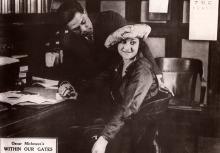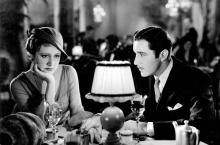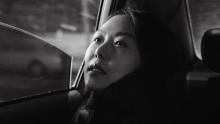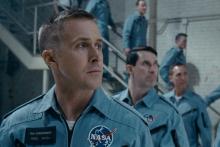Beginning Friday, February 22, UW Cinematheque screenings will resume at 4070 Vilas Hall with a new 4K restoration of I am Cuba. On Saturday, February 23, we will present a 35mm print of Jacques Becker's Casque D'or, also at 4070 Vilas Hall, 821 University Avenue. The lecture from visiting scholar Steve Ryfle and screening of The Learning Tree on Thursday, February 21, as well as the Sunday, February 24 screening of Afraid to Talk, will both take place at the Chazen Museum of Art, 750 University Avenue, as originally announced.
Screenings Resume at 4070 Vilas

CHANGE OF VENUE - 2/15-2/16

Due to ongoing repairs at Vilas Hall, our screenings of Vampires in Havana on Friday, February 15 and our double feature of Jacques Becker's Edouard et Caroline and Antoine et Antoinette on Saturday, February 16 have moved from 4070 Vilas (821 University) to our other regular venue at the Chazen Museum of Art, 750 University Avenue. The double feature of William Wyler's A House Divided and Her First Mate will take place at the Chazen on Sunday, February 17 as originally announced.
VAMPIRES IN HAVANA: Gleefully Tawdry Marxism

The following notes on Juan Padrón's 1985 animated horror-comedy Vampires in Havana, were written by Tim Brayton, PhD candidate in UW-Madison’s Department of Communication Arts. A 35mm print from the University of North Carolina School of the Arts will screen in our annual series supported by the UW's Latin American, Caribbean and Iberian Studies program (LACIS) on Friday, February 15 at 7 p.m. The screening, originally scheduled to take place in our regular venue, 4070 Vilas, has been relocated across the street to the Chazen Museum of Art, 750 University Avenue.
By Tim Brayton
There really is no preparing for Vampires in Havana, the third animated feature made by Juan Padrón (the only significant animation director in Cuba at any point during the 1970s and 1980s). It’s easy enough to consider the film’s obviously-impoverished aesthetic, and compare it to the Saturday morning cartoons of Hanna-Barbera or other similarly cash-strapped American studios. For it does resemble such work more than slightly. Or we could look at the music culture that forms the film’s setting, not to mention its non-stop fascination with sex, and see it as a descendant of the urban American underground animation of creative radicals like Ralph Bakshi, director of the notorious X-rated cartoon Fritz the Cat.
But for all that such comparisons might give us a handle on Vampires in Havana as an object, they don’t get us very far. It’s best not to try too hard contextualize this film in American animation at all. This is a Cuban film through and through, starting with its historical setting in the early 1930s, near the end of Gerardo Machado’s tenure as dictator. Despite all of the sex and vampirism that course through the film, the narrative focus remains squarely on Machado’s tyranny and the efforts by an amateur group of revolutionaries to oppose his regime. The radicalism inherent to underground animation is thus politically-oriented in a way that it isn’t always with the American and European films that share the simple aesthetic of Vampires in Havana. Even its status as simply a dirty cartoon, with substantial female nudity and naughty-minded visual gags, is complicated by revolutionary politics: much of the sexual humor in the film hinges on the main character’s dalliances with Machado’s wife.
Of course the more prominent political message in the film derives from its titular monsters. Undying fiends, descended from the European aristocracy, that survive by sucking the very blood out of defenseless working humans? One hardly has to look deep at all to see why vampires are a perfect subject for Latin American Marxist satire. Vampires in Havana goes further than this by positing two different vampire populations: besides the conservative European branch of the species, there’s also a burly, rough-and-tumble American vampire mafia, based in Capone-era Chicago. This narrative positions the Cuban vampire hero Pepito as standing against not just native-born exploitation, but against competing foreign influences trying to dictate his future – exactly the state in which Cuba found itself in the decades before the 1950s revolution.
The combination of revolutionary history and silly-looking cartoon characters undoubtedly makes for a baffling viewing experience. During the film’s brief appearance in U.S. theaters in 1987, The New York Times (one of the only outlets to take notice of the film at all) ran a review trying to determine if the “bright colors and brash spirits” on display made this a highly inappropriate film for children, or a highly infantile film for adults, before ambivalently concluding, “the 14- to 16-year-old crowd may not get the anticapitalist message, but they might be tickled by the fangs.” Three decades later, with cartoons for grown-ups having become an established genre, it’s a bit easier to appreciate the film’s goofy approach to serious subject matter. Even so, this is a particularly simplified style, one that’s more The Flintstones than The Simpsons, and the intrusion of sex and violence into such a lighthearted aesthetic remains startling. Impressively, unlike the more openly gritty and grotesque American underground animation of the 1970s, the Saturday morning cartoon cheeriness of Vampires in Havana has allowed it to retain something of the original appeal of underground animation. There is a real sense of the film managing to get away with something subversive here, turning the corny visual gags and caricatured designs typical of children’s cartoons into something hard-edged and more than a little perverse.
This is exactly how it wants to be. Vampires in Havana isn’t trying to be a goofy comedy about wacky animated monsters, nor a mere satire of greedy capitalists and politicians. It is a vigorous celebration of armed revolution. It is unmistakably a propaganda piece, treating Pepito as a slapstick heroic figure: his resistance to Machado is treated as self-evidently admirable even when he comically messes it up, and his defiant act of sticking it to the foreign vampire powers is treated as a giddy, rah-rah climax. The film doesn’t argue for the righteousness of Pepito and his friends, so much as it takes them for granted. In the context of such a straightforward call to mock the bourgeois and their sense of propriety, this dirty vulgar treatment of a kids’ television animation aesthetic is just one more bit of aggressive radicalism. It’s an approach that insists on being snotty and shocking rather than sophisticated and intellectual: in the finest tradition of underground animation around the world, this is first and foremost looking to shock the squares, and doing so with good taste would be almost entirely beside the point. And good taste is certainly something this gleefully tawdry comedy avoids completely.
Micheaux's Ingenuity: WITHIN OUR GATES

These notes on Oscar Micheaux's Within Our Gates were written by Erica Moulton, PhD student in UW-Madison’s Department of Communication Arts. Within Our Gates will have a special screening in honor of Black History Month on Thursday, February 7 at the Chazen Museum of Art.
By Erica Moulton
Within Our Gates, Oscar Micheaux’s second feature film, is as powerful a refutation to the racism of Hollywood depictions of African Americans as any film produced in the early years of cinema. It is a well-disputed myth that there were no black filmmakers and producers at the beginning of the twentieth-century. William A. Foster founded the Foster Photoplay Company in 1910 based out of Chicago, Noble and George P. Johnson were producing films with their Lincoln Motion Picture Company between 1916 and 1921, and the Frederick Douglass Company operated out of Jersey City, New Jersey from 1916 to 1919. These companies (and many others) faced serious obstacles to production and distribution, including limited financial resources and restricted access to screening venues, but a rich output of films produced by black filmmakers, starring all-black casts, for black audiences flourished nonetheless.
Even within this culture of filmmakers, Oscar Micheaux was something of an outsider. After working as a Pullman porter, a homesteader, and a novelist, Micheaux directed his first silent feature, an adaptation of his own novel called The Homesteader in 1919. The film was the first production from his recently formed Micheaux Book and Film Company, and it is unfortunately lost, leaving Within Our Gates as the earliest available evidence of Micheaux’s considerable output. He directed 40 films over a 30-year career, eventually making the transition to sound in 1931 with Darktown Revue and The Exile. Although many of Micheaux’s films are thought to be lost, his legacy is now cemented as integral to the cannon of early American filmmakers and his ingenuity as a storyteller is finally being recognized.
His films that survive are visually arresting and full of distinct characters that serve both as mouthpieces for Micheaux’s messages of racial uplift while also standing on their own as rare examples in early cinema of black characters entirely in possession of their humanity. Within Our Gates features stage and screen actress Evelyn Preer as a Boston schoolteacher Sylvia, whose tragic backstory is told in a series of flashbacks in the latter half of the film. The main story positions her between the city and the countryside, as her newfound love, Dr. Conrad Drebert, is in Boston but her duties as an educator continually beckon her back to Piney Woods, Mississippi.
Micheaux’s films often have a strong moralistic bent, but that doesn’t stop him from occasionally reveling in the illicit goings-on of the Boston criminal underbelly. One of these Bostonian lawbreakers is Red, whose illegal poker game provides the set up for some of Micheaux’s most exciting camerawork and editing. In this early scene, Micheaux structures a series of insert shots revealing the criminal’s method of cheating, all while expertly building the tension between the players as one of them slowly realizes he is being duped. The scene culminates with a shoot-out that takes place partially in darkness. Throughout the entire scene, Micheaux is also completely at ease cross-cutting between the poker game and the unaware Sylvia, who sleeps peacefully at her cousin’s boarding house. When one of the men escapes to the boarding house after the shoot-out, Sylvia proclaims that she dreamed she saw him shoot a man. Amazingly, Micheaux structures the cross-cutting both to express parallel action, but also to potentially suggest that the poker game be interpreted as taking place in Sylvia’s head! Micheaux was long interested in dreams and premonitions, so these moments of ambiguity are common, though still no less shocking, in his films.
Arthur Jafa, the prominent black cinematographer on projects like Julie Dash’s Daughter of the Dust and Spike Lee’s Crooklyn, speaks of Micheaux’s ability to exist outside the norms created in Hollywood in Oscar Micheaux and His Circle (a fantastic book recently published in paperback by Indiana University Press). Jafa insists “that there is nothing arbitrary about Micheaux’s work, that it displays the most lucid kind of coherency. I think he was actually in the process of developing something equal to the aesthetic coherency of jazz.” Within Our Gates is endemic of Micheaux’s idiosyncratic style, particularly in the last act which reveals the tragedy that befell Sylvia prior to her arriving in Boston. Her story hinges on two acts of unspeakable violence, the lynching of Sylvia’s adopted family by a white mob and the attempted rape of Sylvia by a wealthy white landowner who turns out to be her biological father.
The unflinching presentation of these horrific acts led censors to ban the film in theaters or demand that Micheaux make cuts. When it was eventually released in Chicago in 1920, local aldermen feared the film would inspire riots. In Louisiana, the police were tipped off about the film, prompting them to visit the local picture houses, essentially ensuring it was not screened in any southern theater. In other cities, black theater owners and audiences rejected the film on the grounds that its depiction of a lynching was too painful to endure. Lincoln Motion Picture Company-owner George Johnson wrote to Micheaux telling him that many audiences simply walked out of the screenings in Omaha. Micheaux avoided making films as overtly political in the future, but he continued telling stories that challenged and entertained audiences for the next twenty years.
Oscar Micheaux was, above all else, an expert storyteller, able to marshal the expressive qualities of cinema to tell intricate stories that are often equal parts entertaining, thrilling and horrifying. In responding to Johnson’s comments about Within Our Gates, Micheaux wrote about his tendency to mix politics and storytelling, explaining, “It is true that our people do not care—nor the other races for that matter, for propaganda as much as they do for all story...I discovered that the first night Within Our Gates was shown. Still, I favor a strong story at all times, since I believe that every story should leave an impression.”
CHANGE OF VENUE - 2/8-2/9

Due to ongoing repairs at Vilas Hall, our screenings of Birds of Passage on Friday, February 8 and Rendezvous en Juillet on Saturday, February 9, have moved from 4070 Vilas to our other regular venue at the Chazen Museum of Art, 750 University Avenue. Our screenings of Within Our Gates and Ladies Must Love will take place at the Chazen as originally announced.
BACK STREET: The Case of John M. Stahl

These notes on John M. Stahl's Back Street were written by Zachary Zahos, PhD candidate in the Department of Communication Arts at UW–Madison. A 35mm print of Back Street will screen in our Sunday Cinematheque at the Chazen Universal series on Sunday, February 3 at 2 p.m. in the Chazen Museum of Art's auditorium. Free admission!
By Zachary Zahos
Long neglected or dismissed by critics, John M. Stahl (1886–1950) has enjoyed renewed attention as of late. The inclusion of two timeless Stahl films, Back Street (1932) and Seed (1931), in UW-Cinematheque’s series of Carl Laemmle Jr.-era Universal Studios pictures follows a flurry of well-received repertory bookings across North America and Europe. In its larger Universal series from 2016, the Museum of Modern Art rounded out the aforementioned two melodramas with Stahl’s Only Yesterday (1933), forming what curator Dave Kehr called “an informal trilogy of mature, morally ambivalent films about adultery.” I attended those three MoMA screenings, and virtually no other cinematic experience can compare: none match my sense of discovery, my intense emotional identification with the films’ protagonists, or my mystification as to how Stahl’s spare style ultimately achieves these transcendent effects.
That was 2016, a couple months before I moved to Madison to become a graduate student. I have since, to put it mildly, observed the circulation of Stahl’s films with interest. Last year, for example, Italy’s premiere classic film festivals mounted major, parallel Stahl retrospectives: Il Cinema Ritrovato in Bologna showcased a generous sample of his sound films, while the Pordenone Silent Film Festival wrangled his exceedingly rare surviving work from 1917-1926. These efforts have challenged Stahl’s reputation as merely the “capable craftsman” behind Gene Tierney thriller Leave Her to Heaven (1945), according to TCM; or “the one who made the first versions of Sirk’s masterpieces” like Imitation of Life (1934, Stahl; 1959, Sirk), as critic Yann Tobin once ruefully put it. While these retrospectives have found room for generic outliers—like his wistfully romantic war film Immortal Sergeant (1943), starring Henry Fonda and Maureen O’Hara—Stahl’s mastery of melodrama has emerged as the big takeaway, for some.
I say “for some,” because a select handful of scholars and critics have long been hip to Stahl’s genius. Many can be found in The Call of the Heart: John M. Stahl and Hollywood Melodrama, a new collection of essays by eminent scholars—UW-Madison’s Professor Lea Jacobs among them. Of Stahl’s melodramas, Back Street specifically has long served as one of the most fruitful case studies: for Jacobs, in her book The Wages of Sin: Censorship and the Fallen Woman Film, 1928-1942 (1991) and other articles; for historian and former UW Prof. Tino Balio, in his book Grand Design: Hollywood as a Modern Business Enterprise, 1930-1939 (1995); and for feminist critic Molly Haskell, in From Reverence to Rape: The Treatment of Women in the Movies (1974).
Back Street’s enduring appeal lies in part in the simplicity of its plot, adapted from Fannie Hurst’s novel, and the eternal currents running beneath it. Middle-class beauty Ray Schmidt (Irene Dunne) and upper-middle-class salesman Walter Saxel (John Boles) fall in love, but a missed concert rendezvous precludes their marriage. Years later, they meet again, by which point Walter has married a wealthier woman. Still infatuated with one another, Ray agrees to be Walter’s mistress, and the subsequent action shows very little of the happiness they presumably shared. Instead, Ray passes most of her days alone, holed up in the “back street” apartment Walter bought for her. When doting childhood friend Kurt (George Meeker), who has since become a rich car manufacturer, re-enters her life, Ray faces another fork in the road. In my experience, her decision—disclosed through a bold narrative ellipsis, one of many—elicits an audible reaction from the audience.
The research of Jacobs and Balio has revealed how Back Street, despite its underseen status today, was subject to agonizing censorship debates upon and well after its 1932 release. Colonel Jason S. Joy, head of the Studio Relations Committee (SRC), distrusted Laemmle Jr. for “lapses in taste” at a time when enforcement of the Production Code was patchy at best. Industry overseers anticipated a backlash, and they got one: Catholic newspapers excoriated the film for teaching “false principles of morality,” and the Catholic Legion of Decency condemned it two years later. Grappling with the counterintuitive logic of censors and conservative audiences, Jacobs surmises that the hostility toward the film was because of how tender and “subdued” Ray and Walter’s extramarital relationship is, and not in spite of it. If Ray behaved in a more licentious and selfish manner, the thinking goes, she could be more easily stigmatized. Instead, under Stahl’s direction, Dunne scaled back her performance, investing intelligence, independence, and lovesick melancholy into her actions and pauses.
For Haskell, Dunne’s brilliance, Stahl’s “sublime” direction, and the specifics of the scenario launch this Back Street miles above Universal’s two later remakes of Hurst’s novel. Dismissing the “inane” 1961 David Miller adaptation, starring John Gavin and Susan Hayward, Haskell notes how Ray’s socioeconomic upgrade from susceptible young everywoman to “globe-trotting fashion executive” undercuts “the closed system of decisions and consequences on which middle-class tragedy depends.” Contrasting Stahl’s film to the 1941 Robert Stevenson version, which starred Margaret Sullavan and Charles Boyer, Haskell observes, “The idea of a woman ‘giving up all’ for Charles Boyer is a lot easier on the pride than the idea of ‘giving up all’ for John Boles. But then, Boyer’s delicacy and intelligence make it impossible to believe him capable of the insensitive behavior toward a woman that one can believe of Boles.”
Indeed, while Boles has a mediocre reputation as an actor, he excelled as the dashing narcissist—parts he also played in Seed and Only Yesterday. The final scenes in Back Street make Walter the most sympathetic of the three scoundrels Boles played for Stahl. Cinematographer Karl Freund (of The Last Laugh fame) deserves ample credit here, for lighting Boles and Dunne with shards of bright, drifting light at key moments. But the magic of the whole enterprise belongs to Stahl, who matched a sure hand with unadulterated empathy, defying critics, censors, and fellow craftsmen to this day.
PROTOTYPE: A 3D Avant-Garde Experience

These notes on Blake Williams' Prototype were written by Tim Brayton, PhD candidate in the Department of Communication Arts at UW Madison. Prototype will be screened in its original 3D format on Friday, January 18 at 7 p.m., the opening selection for 2019 Cinematheque programming. The screening will be held in our regular venue at 4070 Vilas Hall, 821 University Avenue.
By Tim Brayton
To say that Blake Williams’ Prototype is about the hurricane that nearly eradicated Galveston, Texas in 1900 is useful only insofar as it gives us something to hold onto. In fact, what we have before us is a film without a story, without incidents, and frequently without any sense of physical representation at all – a genuine avant-garde film.
If this is your first time watching an avant-garde film, don’t panic! There are a few tricks to get you through the experience, the most important of which is to not try to figure it all out. Williams has suggested in interviews that the “meaning” of the film may lie in its presentation of impossible technology. In Prototype, you’ll see many examples of archival footage being displayed on eerie, floating screens, reclaimed from old cathode-ray television sets. To Williams, these evoke the Space Age of the mid-20th Century, offering a means of mediating our visual history twice over: an old technology depicting even older footage. One goal of this was to present an alternative of the Galveston that never was. The city might have become one of the most important in the United States if not for the devastating effect of the hurricane, and part of what Prototype is aiming for is to suggest a futuristic Galveston from the perspective of that critical event. So much of the film is basically set in the 1960s – just not the 1960s we’re familiar with.
That’s just one filmmaker’s interpretation of his own work. You’re certainly welcome to try out another, or none at all. Part of the pleasure of watching a film like Prototype is simply in enjoying the audacious visuals that Williams has prepared, manipulating film in some very cunning ways. But also some not-so-cunning ways. One of the film’s most striking early images is achieved simply by filming ocean waves from a high angle, and flipping it upside down. The result is the curious bending feeling of seeing the unstable water loom overhead and seem to bend away impossibly in the distance. Is this meant to evoke the feeling of being in the heart of a hurricane? Or is it simply allowing us to look a relatively familiar sight from a dramatic new angle, asking us to reconsider what we see when we see water?
Elsewhere in the film, Williams does more than just change the angle of shots. He also dissolves one image into the next, creating overlays in which we see two or three different layers of an image all moving in different directions (including that same upside-down shot of waves). The complexity of this image creates a playfully chaotic viewing experience: we can’t see everything all at once, and what we can see is hard to resolve into one single object, so the film turns into a game of picking out the details we can see, tracing them to the point where they blend into other layers. Once again, the film invites us to rethink how we look at movies, by shaking up our sense of what the movie even is.
Of course, the most dramatic and obvious way in which Prototype creates new viewing experiences for us is in its use of stereoscopic 3D. Unlike narrative films that use 3D to enhance our sense of realism and the physical presence of the movie (when they’re not trying to make us jump by sending objects flying out of the screen), the dimensional effects in Prototype are only rarely about creating an illusion that “we are there.” Williams uses exaggerated wide perspectives inside a house to make the rooms seem to bulge in the middle; he also lingers over the rounded surface of the television tubes, making us notice how they, too bulge, even when they’re only depicting blank grey screens. Early in the film, there are 3D still photographs of Galveston in the immediate aftermath of the hurricane, giving us a stark feeling of history popping out into reality. But even here, note that the effect is imperfect. Frequently, a scratch or smudge will only appear in one eye, creating the impression that it’s floating in space, simultaneously present and not.
The trick of sending incompatible images to each of our eyes becomes a major visual motif in Prototype as it develops. One of William’s avowed inspirations was Jean-Luc Godard’s 2014 film Goodbye to Language, which (in)famously split the two camera of the 3D filming rig apart, meaning that two entirely distinct scenes were being beamed to the viewer’s eyes at the same time. Prototype never does anything quite that aggressive, but there are multiple places where the film sends incompatible signals to each eye. For example, there are abstract geometric shapes that appear occasionally: one eye sees the shape as black-on-white, the other sees the shape as white-on-black. The result is a shimmering grey like nothing in nature. It can be a little bit disconcerting the first time you see it, but once again, the best way to think of it is as a challenge to normal perception. The film’s goal is to make you think about what you’re seeing by presenting images that, in a very real, physical sense, cannot exist. The great achievement of Prototype lies in creating these impossible images, and perhaps the best way to watch it is to simply let those images wash over you. Think about what you’re seeing; think about how it feels to look at the movie. It’s certainly an experience like none you’ve ever had.
Zachary Zahos' Favorite Movies of 2018

Zachary Zahos is a PhD Candidate in the Department of Communication Arts at UW Madison. He is Project Assistant and a Programmer for the UW Cinematheque and the Wisconsin Film Festival.
In 2018, I saw 145 new feature films. By “new,” I mean that these films either a) played in Madison over the past year or b) are at least now available on popular SVOD services like Netflix, Prime Video, and Hulu after 2018 theatrical runs in larger cities like New York. Of these 145, the following ten are the ones that have stayed with me most:
1. 24 FRAMES (Abbas Kiarostami)
2. WESTERN (Valeska Grisebach)
3. THE DAY AFTER (Hong Sang-soo)
4. ROMA (Alfonso Cuarón)
5. SPIDER-MAN: INTO THE SPIDER-VERSE (Bob Persichetti, Peter Ramsey, and Rodney Rothman)
6. EL MAR LA MAR (Joshua Bonnetta and J.P. Sniadecki)
7. JEANNETTE: THE CHILDHOOD OF JOAN OF ARC (Bruno Dumont)
8. FIRST MAN (Damien Chazelle)
9. ISMAEL’S GHOSTS (Arnaud Desplechin)
10. LET THE SUNSHINE IN (Claire Denis)
This past year, I also saw 244 older movies for the first time, many of them at the UW-Cinematheque. The following ten are my favorite “new-to-me” older films, masterpieces all:
1. THE MARRIAGE OF MARIA BRAUN (Rainer Werner Fassbinder, 1979)
2. FLOATING CLOUDS (Mikio Naruse, 1955)
3. FAR FROM HEAVEN (Todd Haynes, 2002)
4. THE TREE, THE MAYOR, AND THE MEDIATHEQUE (Eric Rohmer, 1993)
5. T,O,U,C,H,I,N,G (Paul Sharits, 1969)
6. THE SMALL BACK ROOM (Michael Powell and Emeric Pressburger, 1949)
7. THE SLEEPING BEAUTY (Catherine Breillat, 2010)
8. A FAREWELL TO ARMS (Frank Borzage, 1932)
9. NIGHT AND DAY (Hong Sang-soo, 2008)
10. ELEPHANT (Alan Clarke, 1989)
Finally, I would like to share two more lists, both of which highlight some of the memorable acting committed to screen in 2018. The first are 15 favorite lead performances, in rough order of preference:
Lady Gaga, A STAR IS BORN
Regina Hall, SUPPORT THE GIRLS
Ethan Hawke, FIRST REFORMED
Juliette Binoche, LET THE SUNSHINE IN
Kim Min-hee, THE DAY AFTER
Helena Howard, MADELINE’S MADELINE
Leslie Mann, BLOCKERS
Thomasin McKenzie, LEAVE NO TRACE
Meinhard Neumann, WESTERN
Isabelle Huppert, MRS. HYDE
Melissa McCarthy, CAN YOU EVER FORGIVE ME?
Sakura Ando, SHOPLIFTERS
Yalitza Aparicio, ROMA
Sarah Silverman, RALPH BREAKS THE INTERNET
John David Washington, BLACKKKLANSMAN
And, 15 favorite supporting performances:
Zoe Kazan, THE BALLAD OF BUSTER SCRUGGS
Jesse Plemons, GAME NIGHT
Hugh Grant, PADDINGTON 2
Dolly Wells, CAN YOU EVER FORGIVE ME?
Geraldine Viswanathan, BLOCKERS
Danai Gurira, BLACK PANTHER
Brian Tyree Henry, IF BEALE STREET COULD TALK
Olivia Colman, THE FAVOURITE
Cedric Kyles, FIRST REFORMED
Marina De Tavira, ROMA
Marion Cotillard, ISMAEL’S GHOSTS
Adda Senani, MRS. HYDE
Miranda July, MADELINE’S MADELINE
Alex Wolff, HEREDITARY
Jennifer Garner, LOVE SIMON
Ben Reiser's Favorite Movies of 2018

Ben Reiser is a Programmer for the UW Cinematheque and the Wisconsin Film Festival.
Ten recent movies I thoroughly enjoyed in 2018:
BLOCKAGE (Mohsen Gharaie, 2017)
CREED II (Steven Caple Jr., 2018)
THE DEATH OF STALIN (Armando Iannucci, 2017)
THE GUILTY (Gustav Moller, 2018)
MAKALA (Emmanuel Gras, 2017)
MISSION IMPOSSIBLE: FALLOUT (Christopher McQuarrie, 2018)
PRIVATE LIFE (Tamara Jenkins, 2018)
A QUIET PLACE (John Krasinski, 2018)
THE RIDER (Chloe Zhao, 2018)
SPIDER-MAN: INTO THE SPIDER-VERSE (Peter Ramsey, Robert Persichetti Jr., Rodney Rothman, 2018)
Eleven more I enjoyed just as much:
THE BALLAD OF BUSTER SCRUGGS (Joel & Ethan Coen, 2018)
CUSTODY (Xavier Legrand, 2017)
DAMSEL (David Zellner & Nathan Zellner, 2018)
ISLE OF DOGS (Wes Anderson, 2018)
LIFE AND NOTHING MORE (Antonio Mendez Esparza, 2018)
PADDINGTON 2 (Paul King, 2018)
THE PREDATOR (Shane Black, 2018)
RAMPAGE (Brad Peyton, 2018)
REVENGE (Coralie Fargeat, 2017)
SWEET COUNTRY (Warwick Thornton, 2017)
THREE IDENTICAL STRANGERS (Tim Wardle, 2018)
Mike King's Favorite Films of 2018

Mike King is the Cinematheque's Programmer and Chief Projectionist and is Senior Programmer for the Wisconsin Film Festival.
Top ten new films to play Madison in 2018, in alphabetical order:
3 FACES (2018, Jafar Panahi)
FIRST MAN (2018, Damien Chazelle)
FIRST REFORMED (2017, Paul Schrader)
THE GREEN FOG (2017, Guy Maddin, Evan Johnson, Galen Johnson)
MANDY (2018, Panos Cosmatos)
THE MULE (2018, Clint Eastwood)
THE OTHER SIDE OF HOPE (2017, Aki Kaurismäki)
PHANTOM THREAD (2017, Paul Thomas Anderson)
YOU WERE NEVER REALLY HERE (2017, Lynne Ramsay)
ZAMA (2017, Lucrecia Martel)
